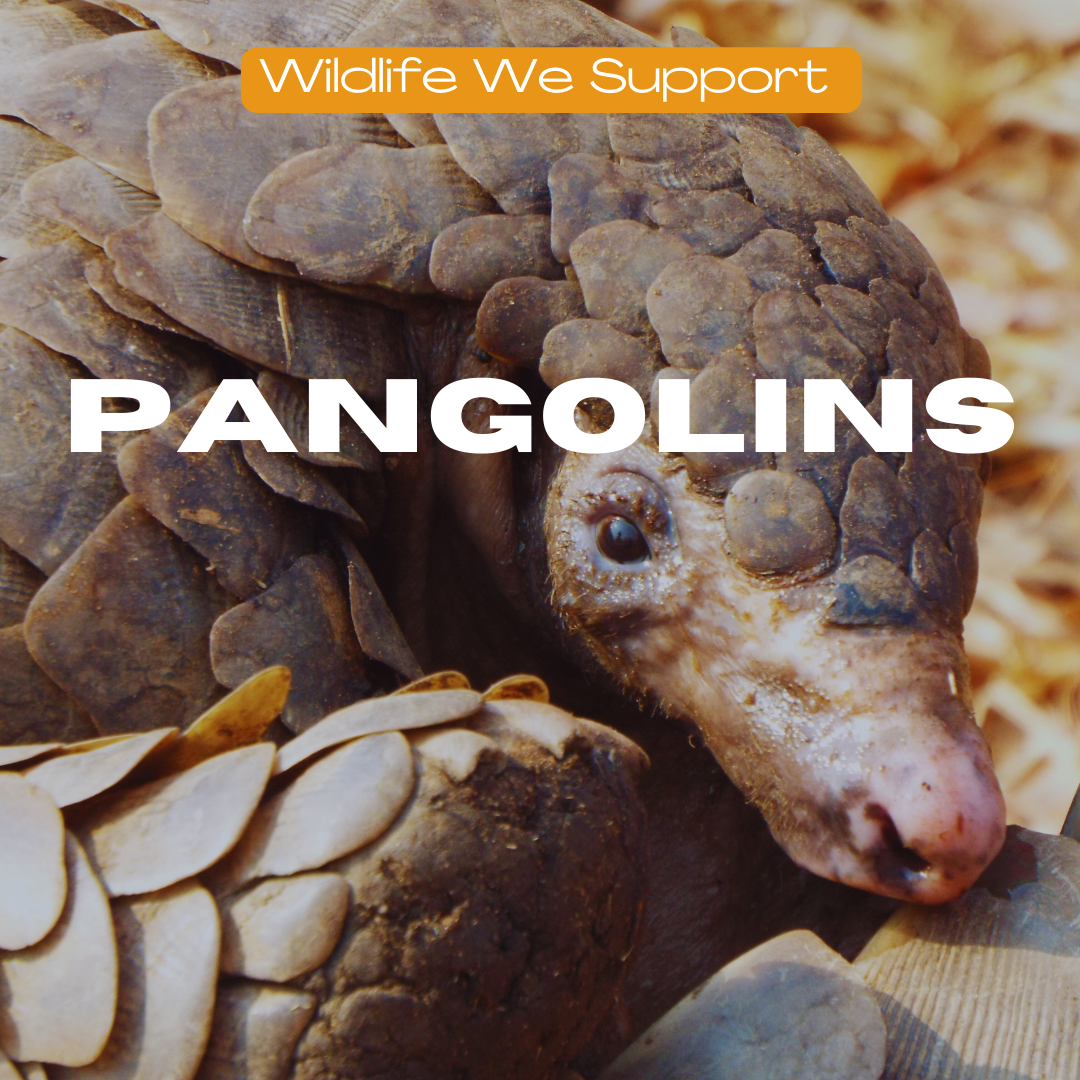Pangolins: #1 trafficked mammal in the world!
2.7 Million African Pangolins are killed every year
Photo Credit: Louis Mornaud
If you’re ever lucky enough to experience a pangolin in the wild, you’ll immediately fall in love with their gentle and inquisitive sprits! Their whip long tongues darting in and out to capture delicious termites and ants, then sniffing the air to source more!
Pangolins are classified as critically endangered by C.I.T.I.E.S (Convention on International Trade in Endangered Species). However, very little seems to be working in terms of protecting them. While technically a protected species in China, the black market there continues to lead the demand for pangolin meat, scales and body parts. Pangolin meat is considered a rare delicacy and their scales and various body parts touted as powerful components of traditional medicines. Even though it is now widely understood that because their scales are made of keratin (same stuff as our finger and toe nails) they offer no medicinal benefit. Sadly, changing belief systems takes a long time, if ever, and all of this makes them the most trafficked mammal today.
The Four Species of African Pangolin
A Temick’s Ground pangolin feeding in South Africa. As Nicci Wright says in “Breaking Their Silence” - they are bewitching and steal your heart!
There are eight species of pangolins total. Four live in Asia and four in Africa. The four African pangolins are the Ground Pangolin, Giant Pangolin, Cape Pangolin and Long-Tailed Pangolin.
They can grow as large as 4.5 feet! Curiously, not all pangolin species eat the same kinds of food. They have a definite preference for specific types of ants and termites, which is why it can be hard to rehabilitate them. Their food tastes correlate with the species of termite and ant in the regions they were poached from.
On the rare occasion they are freed from poachers still alive, they are not easy to rehabilitate. Only a few trusted people and facilities are permitted this privilege. Our friend and wildlife expert, Nicci Wright is one of them. Nicci allowed us to accompany her as she took two of pangolin males she and her team rehabilitated, out feeding. They were released back into the wild shortly after we left to join the other success stories in their tracking initiative. We document our whole encounter with Nicci in the award-winning film; “Breaking Their Silence: Women on the Frontline of the Poaching War”.
“The humble pangolin, a scaly anteater, is one of the most endangered animals on the planet because of poaching. The pangolin runs the risk of becoming extinct before most people have even heard of them.”
Pangolin Facts: Mysterious, Gentle Creatures of the Night
They are often confused with anteaters, with their similar looking body and pointed nose, but they are more related to dogs and other mammals that give birth to their young (as opposed to lay eggs). Their only line of defense when threatened, is to roll up into a tight scaly, ball and wait for the threat to pass. Then, they unroll and carry on.
Pangolins are considered creatures of the night, rarely seen during daylight hours. Their elusive nature adds to their mystique.
Handling pangolins is also very specialized. They do not do well in captivity, suffer from dehydration, and can be very difficult to treat. Facilities like the Johannesburg Wildlife Veterinary Hospital have had enough experience with treating them to successfully bring them back to health and release them.
And much like the rapidly disappearing rhino, whose horn is also made of keratin, pangolins command a high price on the black market - more than $3000/kg.
How Many Pangolins Are Left in World?
Because pangolins live such secluded lives, it is difficult to estimate how many pangolins still remain in the wild. However, we do know that their populations cannot possibly sustain the decimation of demand caused by poachers and the illegal wildlife trade, which rips more than 2 million pangolins from the wild every year. These gentle but helpless creatures are estimated to be down to a mere 50,000 worldwide.
What We’re Doing To Help Pangolins
From helping fund a new telemetry system for rehabilitated pangolins rescued from poachers to nursing babies who are left without mothers by poachers, learn more about our efforts to protect Africa’s vulnerable wildlife.
Why Pangolins are Important
Pangolins are often referred to as, 'the guardians of the forest' because they help maintain a balanced ecosystem. Pangolins' diet of termites helps regulate the forest from insect infestation and destruction. It’s been estimated that over one year, a pangolin can eat upwards of 70 million ants/termites.
How Can You Help?
Share their story to build awareness and bring attention to their plight
Report wildlife crime and support sustainable products
Hold a local fundraiser in your community to raise funds to help our work





